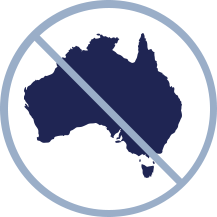As an Australian moving to Singapore there are a number of differences that you should be aware of in relation to taxation.
Having an idea of what to expect will help you to organise your move and understand your tax position so that you are more financially prepared.
You can download our guide: Moving to Singapore, here.
Taxation Basics
The most fundamental difference between Australia and Singapore is that in Singapore there is no CGT in Singapore and they do not generally tax investment income. Singapore also has a much lower rate of tax in their highest tax tier, which is one of the appeals for Australians considering a move to Singapore on a permanent basis.
Other key differences between Australia and Singapore’s taxation system include:
- Financial year
- Terminology used
- What constitutes allowable deductions
- Which income is taxed
- How tax is paid.
For instance, while you are taxed on your worldwide income as an Australian resident, Singapore only taxes residents on income that is actually sourced in Singapore. Read on to see some of the basic differences in taxation from an employment perspective.
| AUSTRALIA | SINGAPORE | |
| Financial Year | 1 July to 30 June | 1 January to 31 December |
| Taxation Body | Australian Taxation Office: ATO | Inland Revenue Authority of Singapore: IRAS |
| Individual Tax Rate | Progessive rate from 0% to 45% for incomes exceeding AUD$180,000.Non residents are taxed a minimum of 15% and up to 45%. | Progressive rate from 0% to 22% for incomes exceeding SGD$320,000. Non residents are taxed between 15% and 22%. |
| Taxed on | Taxable Income that is calculated by taking in your worldwide income less allowable tax deductions. | “Chargeable” Income that is sourced in Singapore. |
Employment Taxation
As an Australian employee you would be familiar with the PAYGW system.
Pay As You Go Withholding ensures that your estimated tax is paid directly to the ATO through the year. Then, at the end of the year, you lodge your tax return and are either required to pay any additional tax owed, or are refunded any excess tax that the ATO received through the year.
Singapore is the opposite. All of your wages will be paid to you in full as an individual. Then you are required to pay your income taxes in full at the end of the tax year. This means you need to be careful to track and keep aside money to pay your tax bill. In your second year as a resident of Singapore you can pay your tax for the first year using a monthly instalment system.
You will also be used to working in a system where you can claim work related deductions to help bring your tax obligations down. In Australia any work expenses that your employer does not cover can be paid for yourself, then claimed as a deduction that reduces your taxable income. Singapore does not allow employees to claim tax deductions. This means you will want to be extra sure that your employer is covering your work related costs.
Another system you will be familiar with as an Australian worker is Superannuation. Your Australian employer is required to make superannuation contributions to your superannuation fund in order to fund your eventual retirement. The accrued superannuation balance is only able to release your superannuation to you in limited situations, such as retirement.
Singapore also has a retirement fund, the Central Provident Fund (CPF). However, this fund does not just serve as a retirement cash payout. Instead, it is intended to help save for housing and healthcare in retirement. Unfortunately for Australian expats, the CPF is not typically available. This means you may need to continue to build an Australian superannuation fund to plan for your own retirement.
| AUSTRALIA | SINGAPORE | |
| Tax on Wages | Managed through the PAYGW system where tax is withheld by your employer and you typically receive a small refund/have a small payable to adjust the total tax required for your actual income over the year. | You are paid your total wage income. When you lodge your tax return you are required to pay your income tax obligations in full at that time. |
| Work Deductions | You can claim deductions as an employee. | You cannot claim deductions as an employee to bring your taxable income down. |
| Super Funds | Employees have Superannuation Guarantee payments paid into their personal super fund at 9.5% of their wages, with capped limits. All employees over 18 and earning more than $450 a month are paid superannuation. Temporary residents or visitors who depart Australia can have their Australian Superannuation paid out or rolled into an overseas fund. If this isn’t organised within 6 months their superannuation money will be transferred to the ATO as unclaimed super money. | Singaporeans and permanent residents are covered by a Central Provident Fund (CPF) that helps provide for retirement, including housing and healthcare. While individuals contribute to their own fund, employers contribute 17% of wages paid, loved ones typically contribute, and the government also provides top-ups and incentives. Only Singaporeans are eligible for the CPF. This means Australian expats may need to maintain a local Australian super fund instead, bearing in mind that contributions could be subject to tax in Singapore. |
Other Taxation Matters
Employment income is not the only source of income. While Australians are taxed on a range of income types, the Singapore tax regime is not the same.
Capital Gains Tax
Australians are required to pay tax on the sale of most capital assets, and in some situations they are even taxed on the deemed realisation of assets. Certain concessions, such as the 50% discount where the asset has been held for more than 12 months, can be applied. Singapore does not have a capital gains tax regime at all.
Goods and Services Tax (GST)
GST is a tax that applies in both Australia and Singapore on the sale of goods and services. GST is 7% in Singapore, whereas it is 10% in Australia. However, this doesn’t necessarily mean you end up paying less GST in Singapore overall. While Australia has a large range of supplies that are exempt from GST, including essential goods and services, Singapore only has a limited number of exempt supplies.
Investment Income
In Australia you are taxed on investment income at your own individual marginal tax rate. However you are also typically able to claim tax credits for any tax that the company has paid on income that is distributed to you.
In Singapore a company pays taxes on its own chargeable income. This is the final tax paid, and investment income that is passed on to shareholders is not taxed in their hands. (If the investor is a non-resident, they would only be liable for non-resident taxes in accordance with their country of residence).
Running a Company
If you plan to run a company in Singapore there are a wide range of requirements that you need to understand in terms of setting up and running the company. Not the least of these is that, from a taxation perspective, the first three years of operation are tax free for the first $100,000 of chargeable income. After this the company tax rate is only 17%. In Australia the company tax rate is currently 30%.
| AUSTRALIA | SINGAPORE | |
| Capital Gains Tax | Taxable Income. Capital Losses are quarantined and can only be offset against other capital gains. If you cease to be an Australian resident you will be deemed to have disposed of any GST assets that are not Australian real property for Australian tax purposes. | No Capital Gains tax. |
| GST | 10% There are an extensive number of exemptions including financial supplies, residential rent, and basic essentials such as raw food and medicine. | 7% Exemptions include financial services, digital payment tokens, sale & lease or residential property, and important and supply of investment precious metals. |
| Investment/Dividend Income | Individuals declare the cash and franking credit that they are distributed. The franking credit counts as a tax credit and the ATO will refund any difference between the franking credit (which is at the company tax rate) and the individual’s tax rate, or the individual is required to pay additional tax if their marginal tax rate is higher than the company tax rate. | Taxes paid by companies are the final taxes chargeable on income. Shareholders are not taxed on dividends they receive from resident companies. |
| Company Tax Rate | 30%. Small business entities (under 2 million turnover) are taxed at 28.5%. | 17%. For the first 3 years, newly incorporated companies are given a full tax exemption for the first $100,000 of chargeable income. |
Tax Differences between Australia and Singapore
While there are some commonalities in the foundation from which the Australian and Singapore systems have grown, there are a lot of differences. These differences range from terminology to timing, what income is taxed, at what point it is taxed, and the tax rate.
As outlined above, there is an appeal in being taxed under the Singapore regime. For instance, the tax rates are lower, there is no CGT, and investment income is not typically tax in the hands of the individual it is distributed to. If you are considering making this move, ensure that you fully understand your personal situation and have a good understanding of whether you would be a Singapore tax resident. It is always important to speak to a professional advisor for a more detailed assessment of your specific situation.



